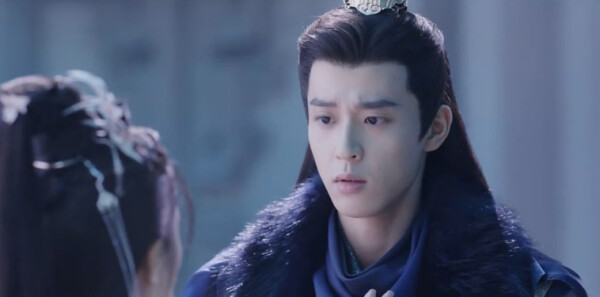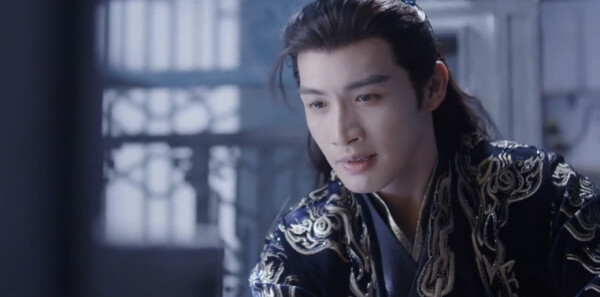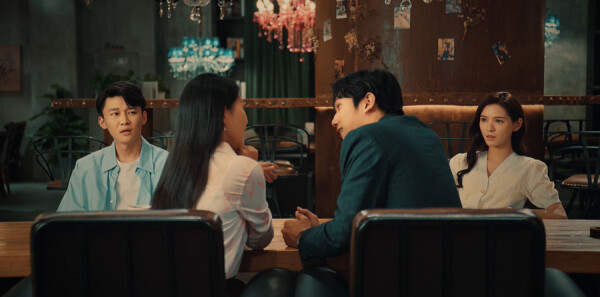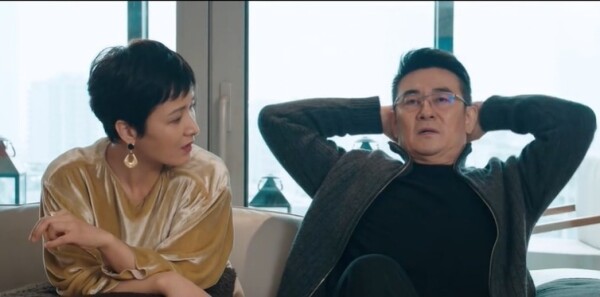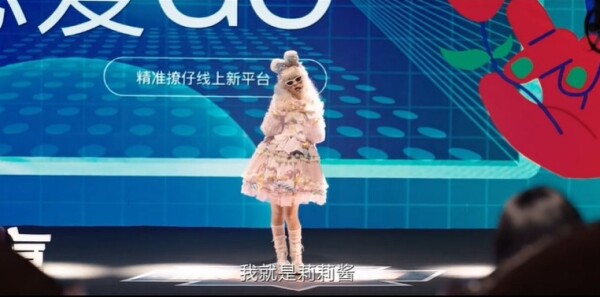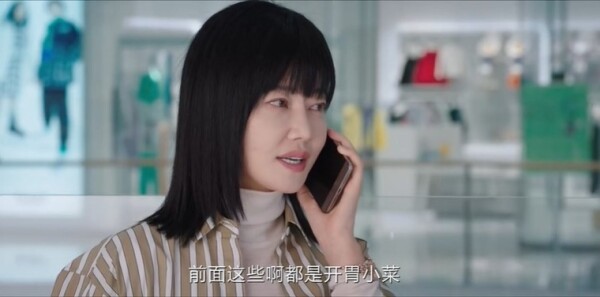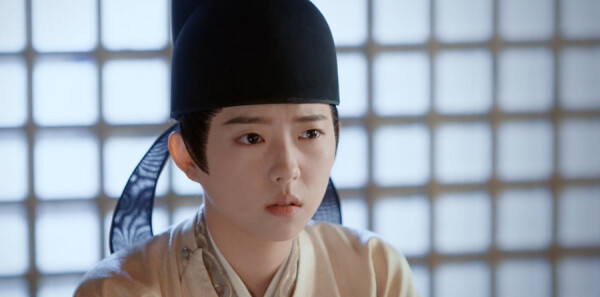After the Quake《Confronting the Fragility of Daily Life in Haruki Murak
- 书评
- 2023-03-26 14:49:34
- 71
The six stories in Murakami’s collection After the Quake are all loosely connected to the disastrous 1995 Kobe earthquake which claimed 6434 lives and caused $102.5 billion in damages. The central characters in After the Quake live far from the physical devastation which they witness only on TV or in the papers. Although none of the characters is physically affected by the deadliness of earthquake nevertheless the impact of the earthquake still sinks into the characters’ psyches and they are often shocked by the fragility of daily life which the earthquake suddenly brought into their consciousness. The true fear haunting Murakami’s characters lingers enclosed within the repeated imagery of characters’ being locked in an empty box. As I unlocked the me
It is not just a fear of immediate death that the earthquake elicits in Murakami's characters; the real fear the earthquake arouses is that of being alone and helpless. In “Honey Pie” the news reports on the earthquake intrigues the four-year-old girl Sala’s iterative nightmare that the Earthquake Man yanks on her arm and tries to put her into a little box. As Sala’s mother Sayoko describes it to her friend Junpei:
She [Sala] wakes up at around the time of the quake. She says a man woke her up somebody she doesn’t know. The Earthquake Man. He tries to put her in a little box—way too little for anyone to fit into. She tells him she doesn’t want to get inside but he starts yanking on her arm—so hard her joint crack—and he tries to stuff her inside. That’s when she screams and wakes up (119).
The earthquake creates various scenes of human sufferings: people running away desperately refugees losing their homes and living in areas without food or water victims getting injured or killed. However by projecting Sala’s feelings about the earthquake onto a “tall and skinny and old” (119) Earthquake Man who stuffs people into boxes Murakami seems to be implying that out of all the sensory details of the havoc it is the idea of being isolated and trapped—as if being boxed into a little cube—that subconsciously impresses and terrifies her most. The notion of fitting into a little box way too little for anyone to fit into namely the separation from daily circumstances inevitably provokes Sala’s sense of being alone. Meanwhile the helplessness that Sala associates with the earthquake is embodied by the picture that regardless of her vain resistance the Earthquake Man yanks on her arm and stuff her inside.
Comic and unrealistic though it appears that very dream of Sala even makes Junpei feel “a chill run up his spine” (145). The chill brings up the theme that no one can distance himself from the fear of being unwillingly boxed neither a four-year-old kid like Sala nor a thirty-six-year-old grown-up like Junpei. Using the ***ogy of Earthquake Man forcefully stuffing Sala into a little box Murakami depicts his characters’ fear of loneliness and helplessness when faced with the most devastating earthquake in modern Japanese history.
The earthquake shakes the lives of the characters in “Honey Pie” however in other stories the earthquake creeps in silently. In “Landscape with Flatiron” the middle-aged painter Miyake is haunted by the nightmare that he is locked and suffocated in a pitch-dark refrigerator which goes as far as to dominate Miyake’s premonition of his own death:
I’m in this tight place in total darkness and I die little by little. It might not be so bad if I could just suffocate. But it doesn’t work that way. A tiny bit of air manages to get in through some crack so it takes a really long time. I scream but nobody can hear me. And nobody notices I’m missing. It’s so cramped in there I can’t move. I squirm and squirm but the door won’t open (40).
That “I scream but nobody can hear me” can be in direct reference to the notion of being completely alone and solitary: however desperately Miyake tries still he cannot make his existence registered. By claiming “I squirm and squirm but the door won’t open” Murakami also reveals the character’s inability to alter his fortune in the agony of suffocation which implies his helplessness.
Despite the similarity between Sala’s being boxed in “Honey Pie” and Miyake’s being locked in another empty box—a refrigerator—in “Landscape with Flatiron” there’s a fundamental difference between the two events: Sala’s nightmare is a result of watching too much Kobe earthquake news; by contrast Murakami keeps the initial time and reason of Miyake’s dream undisclosed throughout the story and all we know is the dream started “way way back there” (41) quite a number of years ago before the earthquake. Although the connection between Miyake’s nightmare and the earthquake appears to be weak the sensation Miyake describes is remarkably similar to being trapped under rubble in an earthquake and the fear of being alone and helpless that most people only become conscious of after the earthquake is no different than what started haunting Miyake long ago in his past life. Murakami seems to express here that the ultimate fragility of his characters’ daily lives though commonly ignored and only sensed with great pain by very few of them like Miyake are always lurking beneath their superficially stable and self-controllable life st
At the beginning of “UFO in Kushiro” the electronics salesman Komura lives an admirable middle-class family life: he has a “decent income” (4) his tension dissipates “when he and his wife were together under one roof” (5) and his wife deems him “good and kind and handsome” (6). However after five straight days she spends in front of the earthquake news on television Komura’s wife abruptly deserts Komura leaving only a note saying that “you have nothing inside you that you can give me… living with you is like living with a chunk of air” (6). The phrase “a chunk of air” is very telling here: on the surface Komura possesses physical space just like he heads off to work and lives a seemingly fulfilling life; however deep inside he is as empty as air because he is so inert and completely passive when interacting with the outside world.
Murakami hints at the passiveness in Komura’s nature little by little after the earthquake: when his wife’s doing nothing but watch the aftermath of the earthquake erects “a stone wall of silence” (4) surrounding her Komura hardly tries to “break through” (4) or figure out what’s going on in her psyche. After the unexpected departure Komura without much effort to remedy the marriage seals the necessary forms his mother-in-law sends him; he asks for a week’s paid leave after divorce however he hasn’t thought about how to spend his week off and decides to accept the offer of his colleague Sasaki to carry a mysterious package—made of wood and weighing practically nothing—to Sasaki’s sister Keiko in Kushiro. In each of the previous examples Komura seems to be lacking a desire to take the initiative when faced with decision regardless of whether it is about divorce or about where to go for a trip and he always accepts the choice others impose on him. This emptiness and nothingness was already there under the ground of Komura’s peaceful life long before the earthquake and by pulling Komura’s life out of track and forcing him to look at the emptiness inside himself the earthquake awakens Murakami’s character to sense the fragility of his life.
However towards the end of “UFO in Kushiro” Murakami subtly and delicately leaves Komura a positive result from the revelation of how fragile daily life is. Having given the enigmatic box consigned by Sasaki to Keiko Komura “all of a sudden” (22) starts to wonder what’s inside the box. On being answered “that box contains the something that was inside you. You didn’t know that when you carried it here and gave it to Keiko with your own hands. Now you’ll never get it back” (22) Komura finds himself “for a split second … on the verge of committing an act of overwhelming violence” (23). This is the very first time in the story that Komura is struck by such emotional intensity which contrasts his previous air-like passiveness. Komura lets Keiko walk away with the box that might contain his soul. By the hardly repressed impulse of “overwhelming violence” Murakami seems to imply that Komura is terrified by how powerless he is over what might happen to his soul in the box. His inert character starts to melt down and though still at the beginning Komura is unlikely to avert his eyes from glimpsing more and more of his true nature. At the end of “UFO in Kushiro” Murakami seems to be urging his characters to confront their own emptiness in life and try to remedy it rather than ignore and run away from it.
The repeated occurrence of the imagery of being locked in an empty box in Murakami’s short story collection After the Quake projects people’s fear of being alone and helpless aroused by the earthquake; however the earthquake exposes rather than generates the loneliness and helplessness that are lying beneath the quiet surface of fragile daily life and characters are often offered the chance to change by their realization of this loneliness and helplessness. Initially astonishing as it might be the awareness of life’s fragility could ultimately lead us through a retrospective confrontation with our inner emptiness and eventually to a new beginning of life.
本文由作者笔名:小小评论家 于 2023-03-26 14:49:34发表在本站,文章来源于网络,内容仅供娱乐参考,不能盲信。
本文链接: http://www.w2mh.com/show/54711.html
 小小评论家
小小评论家







